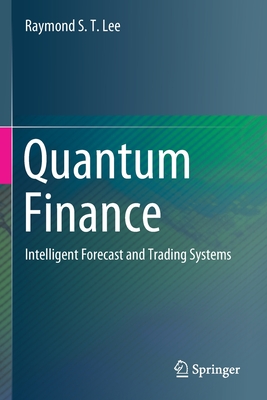買這商品的人也買了...
-
 Pattern Recognition and Machine Learning (Hardcover)
Pattern Recognition and Machine Learning (Hardcover)$4,220$4,009 -
 3D Game Engine Design : A Practical Approach to Real-Time Computer Graphics, 2/e (Hardcover)
3D Game Engine Design : A Practical Approach to Real-Time Computer Graphics, 2/e (Hardcover)$3,600$3,528 -
 開發專屬個人的搜尋引擎:使用 Lucene & Heritrix, 2/e
開發專屬個人的搜尋引擎:使用 Lucene & Heritrix, 2/e$560$476 -
 Unix 編程藝術 (The Art of UNIX Programming)
Unix 編程藝術 (The Art of UNIX Programming)$768$730 -
 Raspberry Pi 從入門到應用 + Raspberry Pi rev 2 Model B 512MB (超值限量合購組)
Raspberry Pi 從入門到應用 + Raspberry Pi rev 2 Model B 512MB (超值限量合購組)$2,340$1,825 -
 Mobile Web 程式設計, 2/e (內容包含 HTML5) (Programming the Mobile Web, 2/e)
Mobile Web 程式設計, 2/e (內容包含 HTML5) (Programming the Mobile Web, 2/e)$880$695 -
 $653Linux 多線程服務端編程:使用 muduo C++ 網絡庫
$653Linux 多線程服務端編程:使用 muduo C++ 網絡庫 -
 測試驅動開發:使用 Python (Test-Driven Development with Python)
測試驅動開發:使用 Python (Test-Driven Development with Python)$880$695 -
 Picturing Quantum Processes: A First Course in Quantum Theory and Diagrammatic Reasoning (Hardcover)
Picturing Quantum Processes: A First Course in Quantum Theory and Diagrammatic Reasoning (Hardcover)$1,600$1,568 -
 $594億級流量網站架構核心技術 — 跟開濤學搭建高可用高並發系統
$594億級流量網站架構核心技術 — 跟開濤學搭建高可用高並發系統 -
 Think Data Structures|Java演算法實作和資料檢索 (Think Data Structures: Algorithms and Information Retrieval in Java)
Think Data Structures|Java演算法實作和資料檢索 (Think Data Structures: Algorithms and Information Retrieval in Java)$480$379 -
 $294被人工智能操控的金融業
$294被人工智能操控的金融業 -
 Java 資料科學|科學與工程實務方法 (Data Science with Java: Practical Methods for Scientists and Engineers)
Java 資料科學|科學與工程實務方法 (Data Science with Java: Practical Methods for Scientists and Engineers)$480$379 -
 Learning with Kernels: Support Vector Machines, Regularization, Optimization, and Beyond (Adaptive Computation and Machine Learning)
Learning with Kernels: Support Vector Machines, Regularization, Optimization, and Beyond (Adaptive Computation and Machine Learning)$3,890$3,696 -
 $474PostgreSQL 指南:內幕探索
$474PostgreSQL 指南:內幕探索 -
 $403深度學習搜索引擎開發 Java 實現
$403深度學習搜索引擎開發 Java 實現 -
 C++ 程式設計的樂趣|範例實作與專題研究的程式設計課 (C++ Crash Course: A Fast-Paced Introduction)
C++ 程式設計的樂趣|範例實作與專題研究的程式設計課 (C++ Crash Course: A Fast-Paced Introduction)$880$748 -
 C++20 : The Complete Guide (Paperback)
C++20 : The Complete Guide (Paperback)$3,375$3,206 -
 Kali Linux 滲透測試全流程詳解
Kali Linux 滲透測試全流程詳解$599$569
相關主題
商品描述
An integrated guide to C++ and computational finance
This complete guide to C++ and computational finance is a follow-up and major extension to Daniel J. Duffy's 2004 edition of Financial Instrument Pricing Using C++. Both C++ and computational finance have evolved and changed dramatically in the last ten years and this book documents these improvements. Duffy focuses on these developments and the advantages for the quant developer by:
- Delving into a detailed account of the new C++11 standard and its applicability to computational finance.
- Using de-facto standard libraries, such as Boost and Eigen to improve developer productivity.
- Developing multiparadigm software using the object-oriented, generic, and functional programming styles.
- Designing flexible numerical algorithms: modern numerical methods and multiparadigm design patterns.
- Providing a detailed explanation of the Finite Difference Methods through six chapters, including new developments such as ADE, Method of Lines (MOL), and Uncertain Volatility Models.
- Developing applications, from financial model to algorithmic design and code, through a coherent approach.
- Generating interoperability with Excel add-ins, C#, and C++/CLI.
- Using random number generation in C++11 and Monte Carlo simulation.
Full source code is available by registering at www.datasimfinancial.com.
Duffy adopted a spiral model approach while writing each chapter of Financial Instrument Pricing Using C++ 2e: analyse a little, design a little, and code a little. Each cycle ends with a working prototype in C++ and shows how a given algorithm or numerical method works. Additionally, each chapter contains non-trivial exercises and projects that discuss improvements and extensions to the material.
This book is for designers and application developers in computational finance, and assumes the reader has some fundamental experience of C++ and derivatives pricing.
商品描述(中文翻譯)
整合C++與計算金融的指南
這本完整的C++與計算金融指南是對Daniel J. Duffy於2004年出版的使用C++的金融工具定價的後續和重大擴展。在過去十年中,C++和計算金融都發生了劇變,這本書記錄了這些改進。Duffy專注於這些發展及其對量化開發者的優勢,具體包括:
- 深入探討新的C++11標準及其在計算金融中的應用。
- 使用事實上的標準庫,如Boost和Eigen來提高開發者的生產力。
- 使用物件導向、泛型和函數式編程風格開發多範式軟體。
- 設計靈活的數值演算法:現代數值方法和多範式設計模式。
- 通過六個章節詳細解釋有限差分法,包括ADE、新的線法(Method of Lines, MOL)和不確定波動模型等新發展。
- 通過一致的方法開發應用程式,從金融模型到演算法設計和程式碼。
- 生成與Excel附加元件、C#和C++/CLI的互操作性。
- 在C++11中使用隨機數生成和蒙地卡羅模擬。
完整的源代碼可通過註冊www.datasimfinancial.com獲得。
在撰寫每一章使用C++的金融工具定價第二版時,Duffy採用了螺旋模型的方法:分析一點、設計一點、編碼一點。每個循環以C++中的工作原型結束,並展示給定的演算法或數值方法是如何運作的。此外,每一章都包含非平凡的練習和專案,討論對材料的改進和擴展。
這本書適合計算金融中的設計師和應用開發者,並假設讀者對C++和衍生品定價有一定的基本經驗。











